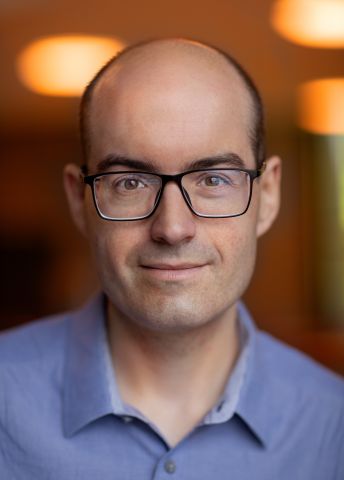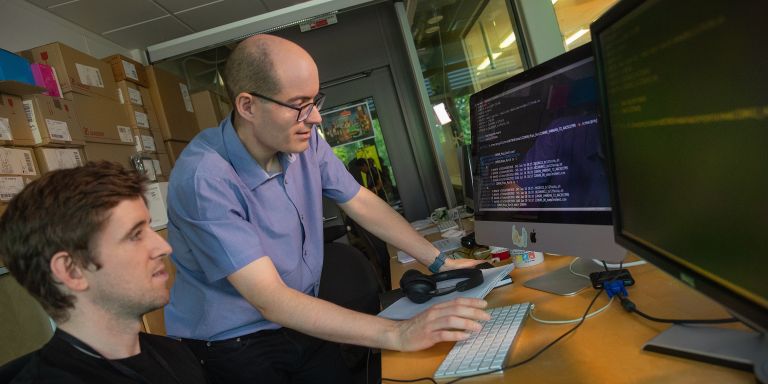
Vicent Pelechano
Professor in RNA Biology
Wallenberg Academy Fellow, prolongation grant 2021
Institution:
Karolinska Institutet
Research field:
Gene expression and genomics


Wallenberg Academy Fellow, prolongation grant 2021
Institution:
Karolinska Institutet
Research field:
Gene expression and genomics
Genetic differences are key to understanding how cells behave. Mutations, for example, may render certain cancer cells more aggressive than others or susceptible to a given drug.
But genetics alone does not explain cell behavior. Cells with identical genes may react differently when exposed to the same substance. If genetically identical cancer cells are subjected to a treatment that, based on their genes, should kill them, a small proportion of those cells may react differently than the others, thereby surviving the treatment.
Pelechano and his research team at SciLifeLab in Stockholm are examining the underlying molecular mechanisms.
“We’re trying to find and understand the minute, non-genetic differences existing between cells that enable them to behave differently. We hope this knowledge will form the basis for new therapies that prevent cancer cells become resistant to drugs,” Pelechano says.
In their search for answers, the team is studying cells in completely new ways. Developing new methods is therefore essential in the lab, where the researchers are combining molecular biology with sequencing techniques and bioinformatics. The methods are also being made available to other scientists.
“We’re mainly studying cancer, but these mechanisms are also important in other fields, such as neurodegenerative diseases and in bacteria. By developing methods, we not only increase our own understanding, we can also help to drive other research forward.”
Cells control their behavior via gene expression, i.e. the process when the genes’ DNA sequence is transcribed to produce RNA, which is then decoded, translated, to produce proteins. Pelechano’s team is examining multiple steps in the process, including the decoding of RNA.
Once the RNA molecules have been used, they are no longer needed and are broken down. It was long believed that the degradation process did not begin until the RNA molecules had been fully decoded. But in earlier research Pelechano has demonstrated that degradation begins at one end of the RNA molecule while the other end continues to serve as a template for protein production.
The researchers are now using a method that sequences RNA molecules during degradation. This enables them to study the degradation products to gain an idea of how the proteins are formed.
“Since many cancer cells depend heavily on their protein production to grow quickly, we want to see if there is anything in that process that can be used to kill the cells. This area has been little researched, and possibly involves a risk of drawing a blank, but now we have the tools to look into it.”
Another of the team’s projects centers on cellular memory. It has been found that if a cell needs to read a given gene to defend itself against a drug, the cell can remember this the next time it is exposed to the drug, and defend itself more quickly.
During his first spell as a Wallenberg Academy Fellow Pelechano studied this phenomenon in yeast cells. The team has since moved on to human cells, in which they are inactivating genes to see how this affects cell memory, the aim being to identify factors that impact the process.
“Without the grant I wouldn’t have been able to establish my lab here in Sweden. It gives me the economic resources and confidence to carry out more research that will have an even greater impact.”
“We have identified a few proteins that induce the cells to respond more slowly the second time. Now we’re trying to understand how it works, since these are not proteins that have previously been associated with the process.”
The researchers hope to be able to reduce the activity of certain proteins between a first and second round of treatment, thereby inactivating cellular memory and rendering the cells susceptible to the medication again.
In early 2020 Pelechano received a visit from a fellow researcher from China. His colleague spoke of a coronavirus that was spreading in the country, and mentioned that measuring body temperature was the method being used to find people who were infected. Pelechano realized there were better ways and decided to lend a helping hand.
Working with some of his colleagues, he modified a recognized method of multiplying genetic material so it would work for the novel coronavirus. In April 2020 they published the result – a test than can be carried out without advanced equipment, where a positive result is shown within half an hour by a color change. Pelechano is pleased that the test has been of use.
“It felt good to be able to use our expertise to help people. It’s fairly rare for basic researchers like us to be able to make such a hands-on contribution.”
The Covid test project exemplifies something he likes about the environment at SciLifeLab – that it is a place where people from different backgrounds meet and exchange ideas. Pelechano moved to Stockholm in 2016 having worked as a researcher for seven years at EMBL in Germany. There are now seventeen people in his research team.
“Setting up a laboratory that works well is not just about building production capacity – it’s also about providing education and creating an atmosphere so that people enjoy coming to work. Here I’ve had the opportunity to do this, and for that I’m very grateful.”
Text Sara Nilsson
Translation Maxwell Arding
Photo Magnus Bergström